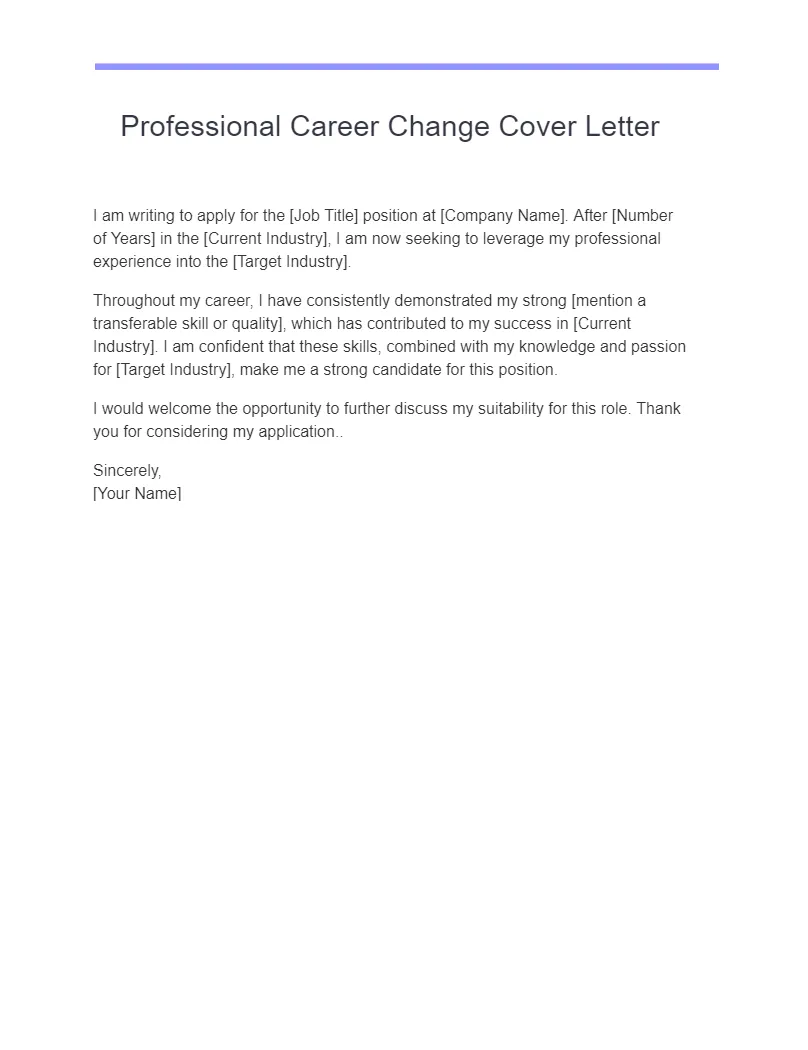Crafting Your Career Change Cover Letter
A career change cover letter is your opportunity to make a strong first impression and persuade a potential employer that your skills and experience are relevant, even if your background isn’t a perfect match for the job description. Unlike a resume, which provides a factual account of your work history, a cover letter allows you to tell your story, explain your career transition, and highlight your suitability for the role. Writing a compelling cover letter is crucial for standing out from other applicants and securing an interview. Remember, it’s not just about listing your past jobs, but demonstrating how your skills translate and why you’re excited about this new opportunity.
Understanding the Purpose of a Cover Letter
The primary goal of your career change cover letter is to convince the hiring manager that you’re a good fit for the position, even if your past experience isn’t directly aligned. This involves clearly articulating your career change goals, explaining why you’re interested in the specific role and company, and emphasizing your transferable skills. It provides context to your resume, showing how your previous roles have equipped you with the skills and knowledge necessary for success in your new field. A well-crafted letter will showcase your personality, enthusiasm, and genuine interest in the opportunity. It is a chance to demonstrate your communication skills, attention to detail, and ability to convey a persuasive argument.
Highlighting Transferable Skills
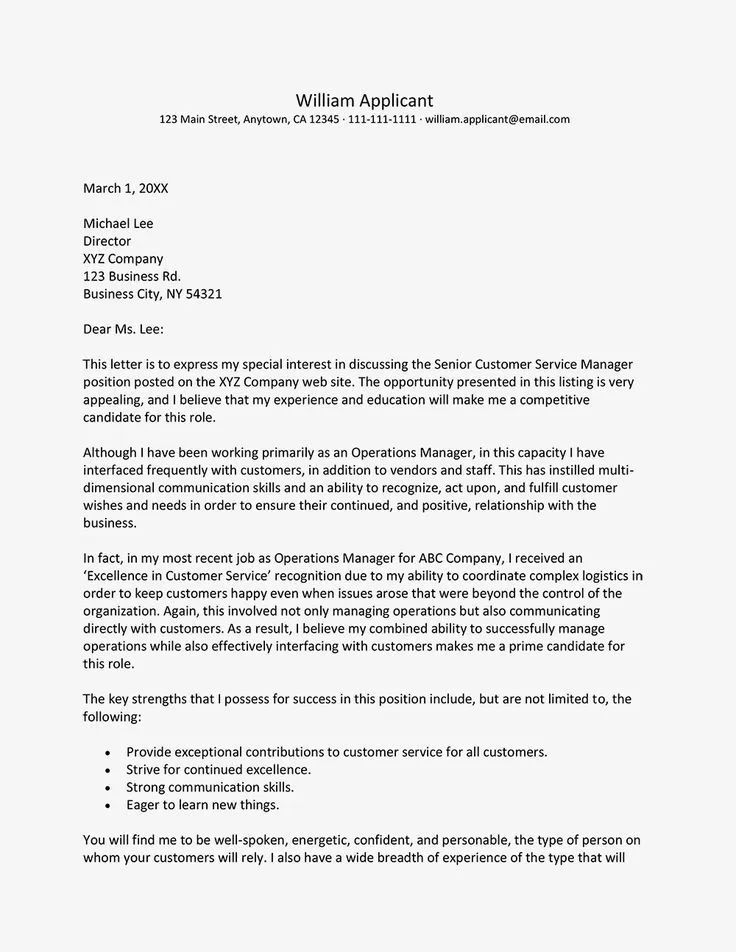
A key to a successful career change cover letter is identifying and highlighting your transferable skills. These are the skills you’ve developed in previous roles that are relevant to the job you’re applying for, even if the job titles or industries are different. Think about skills like communication, problem-solving, leadership, teamwork, project management, and analytical abilities. When writing, provide specific examples of how you’ve used these skills in the past and how they can benefit the employer in the new role. Tailor the skills you highlight to match the requirements outlined in the job description. This targeted approach will show the hiring manager that you understand the position and can contribute immediately.
Researching the Target Company
Before you begin writing, conduct thorough research on the company and the role. Understanding the company’s values, mission, and recent initiatives allows you to tailor your cover letter to demonstrate how your skills and experience align with their goals. Visit the company’s website, read their blog, and follow them on social media to gather information. This also demonstrates your genuine interest in the company, which can make your application stand out. Research the role itself, paying attention to the specific responsibilities and required skills. Then, in your letter, explicitly connect your skills and experiences to the company’s needs and values, showing how you can contribute to their success.
Showcasing Your Enthusiasm
Expressing genuine enthusiasm for the role and the company is crucial. Your cover letter is your chance to showcase your passion and make a connection with the hiring manager. Explain why you’re excited about this career change and why you’re drawn to this specific opportunity. Discuss what interests you about the company’s mission, culture, or recent projects. Be specific and avoid generic statements. Instead, mention what you admire about the company and what you hope to contribute. Remember to maintain a professional tone while expressing your excitement for this new opportunity to help you stand out from the competition and shows that you are truly invested in the position and its potential.
Formatting Your Cover Letter
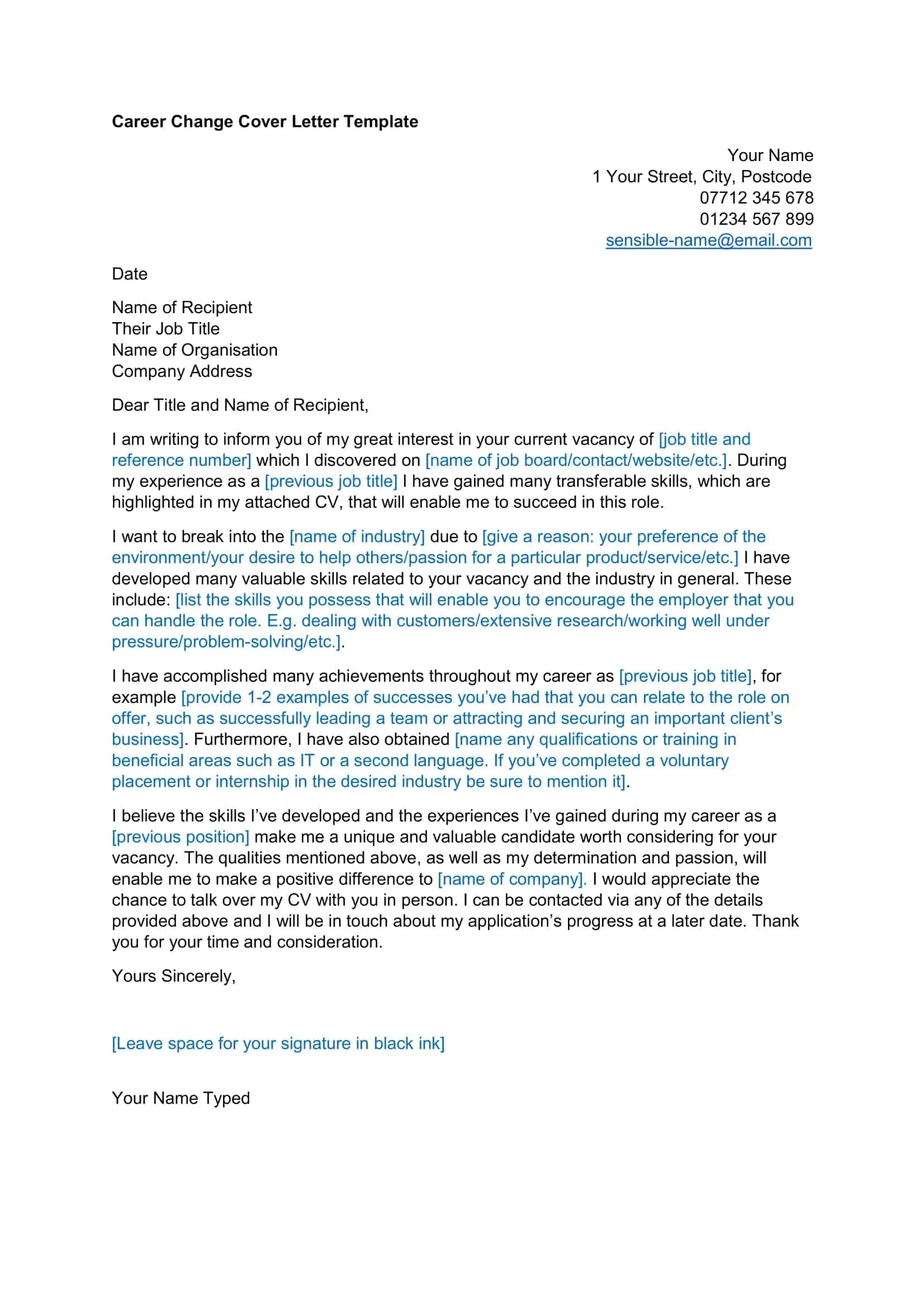
The format of your cover letter is just as important as its content. A well-formatted letter is easy to read, professional, and reflects your attention to detail. Choose a clean and professional font, such as Arial, Calibri, or Times New Roman, and use a font size between 10 and 12 points. Maintain consistent spacing throughout the document. Use single spacing within paragraphs and double spacing between paragraphs. Avoid using excessive formatting or colors that could distract the reader. Ensure your letter is well-organized with clear headings, bullet points (where appropriate), and concise paragraphs. Proper formatting shows you respect the recipient’s time and enhances the readability of your letter.
Contact Information and Date
Begin your cover letter with your contact information, including your name, phone number, email address, and optionally, your LinkedIn profile URL. Place this information at the top of the letter, either on the left or right side. Include the date below your contact information, followed by the hiring manager’s name (if you know it), their title, and the company’s address. This establishes professionalism and allows the recruiter to easily contact you. It is crucial to ensure your contact information is accurate and up-to-date to prevent any missed communication. You may also want to add a subject line mentioning the job title to ensure the email is easily tracked.
Professional Salutation
Start your cover letter with a professional salutation. The most preferred approach is to address the hiring manager by name, such as ‘Dear Mr. Smith’. Researching the name of the hiring manager demonstrates your commitment to the role and your attention to detail. If you can’t find a specific name, use a general salutation like ‘Dear Hiring Manager’. Avoid generic greetings like ‘To Whom It May Concern’, which can make your letter feel impersonal. Use a formal and respectful tone throughout your salutation, setting a professional and engaging tone for your letter. Always spell the name correctly to make a positive first impression.
Body Paragraphs
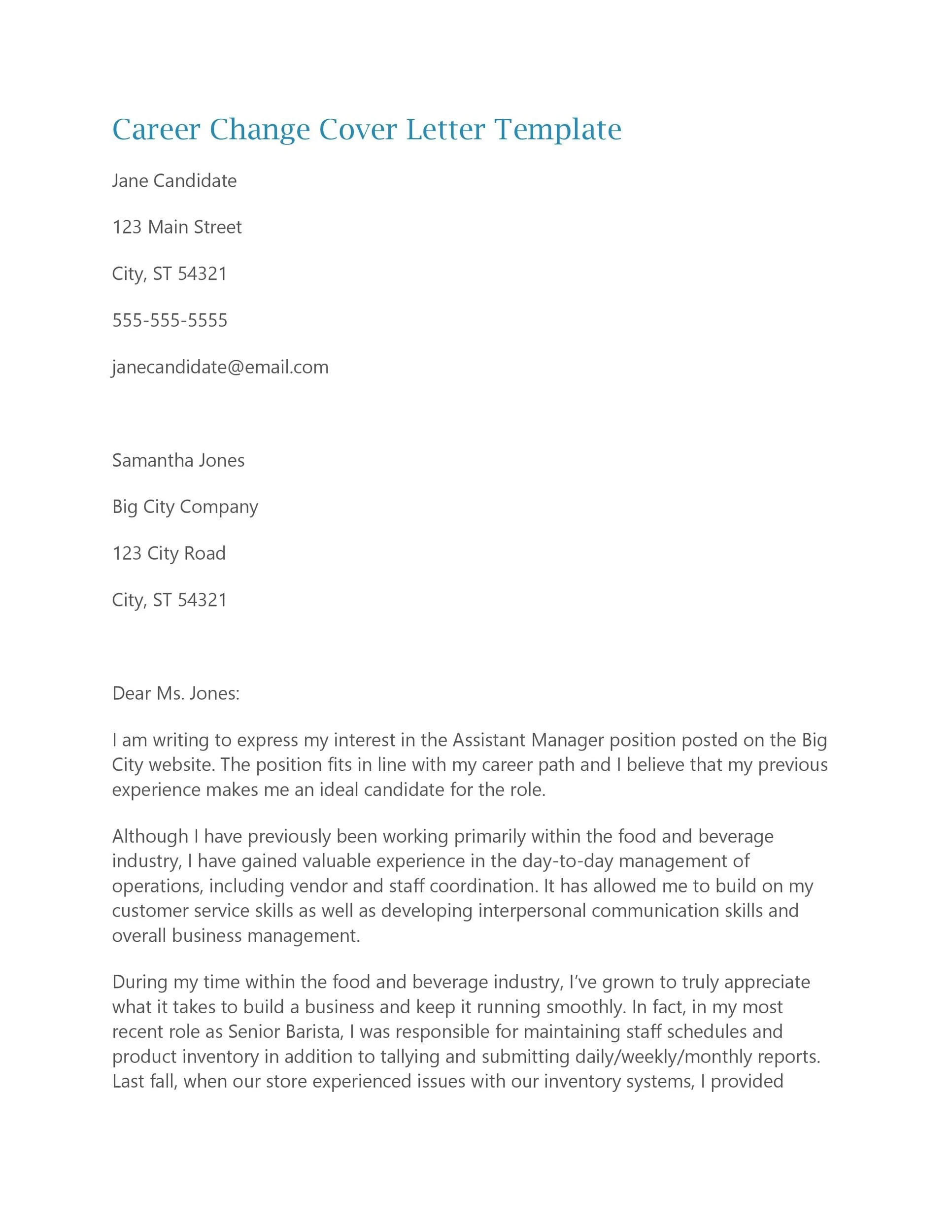
The body of your cover letter is where you make your case. The body should be organized into well-defined paragraphs, each addressing a specific point. The first paragraph should grab the reader’s attention and clearly state your purpose for writing. The subsequent paragraphs should highlight your transferable skills, provide specific examples of your accomplishments, and explain how your experience aligns with the job requirements. Each paragraph should be focused, concise, and relevant to the position. Tailor your letter to match the specific needs of the job. Use strong action verbs and quantifiable results to demonstrate your abilities. Use keywords from the job description to show that you understand the role. Conclude the body with a summary of your qualifications and your enthusiasm for the opportunity.
Closing and Call to Action
End your cover letter with a strong closing and a clear call to action. Express your interest in an interview and reiterate your enthusiasm for the opportunity. Thank the hiring manager for their time and consideration. Include a call to action, such as ‘I look forward to hearing from you soon’ or ‘I am eager to discuss how my skills can benefit your team.’ Keep the closing brief and professional. Ensure your contact information is readily available, as well. Make sure you’re not using the same ending on every cover letter; tailor the closing statement to match the company and the specific role you are applying for. This increases your chances of standing out to the hiring manager.
Writing a Strong Opening
Your opening paragraph is crucial for capturing the reader’s attention and making a positive first impression. It sets the tone for the rest of your letter and encourages the hiring manager to continue reading. Avoid generic openings. Instead, start with a compelling statement that immediately grabs their attention. You can do this by expressing your enthusiasm for the role or by mentioning something specific that caught your eye about the company. Clearly state your purpose for writing and mention the specific position you are applying for. A strong opening creates a strong first impression and demonstrates that you’ve taken the time to research the company and are genuinely interested in the opportunity.
Grabbing the Reader’s Attention
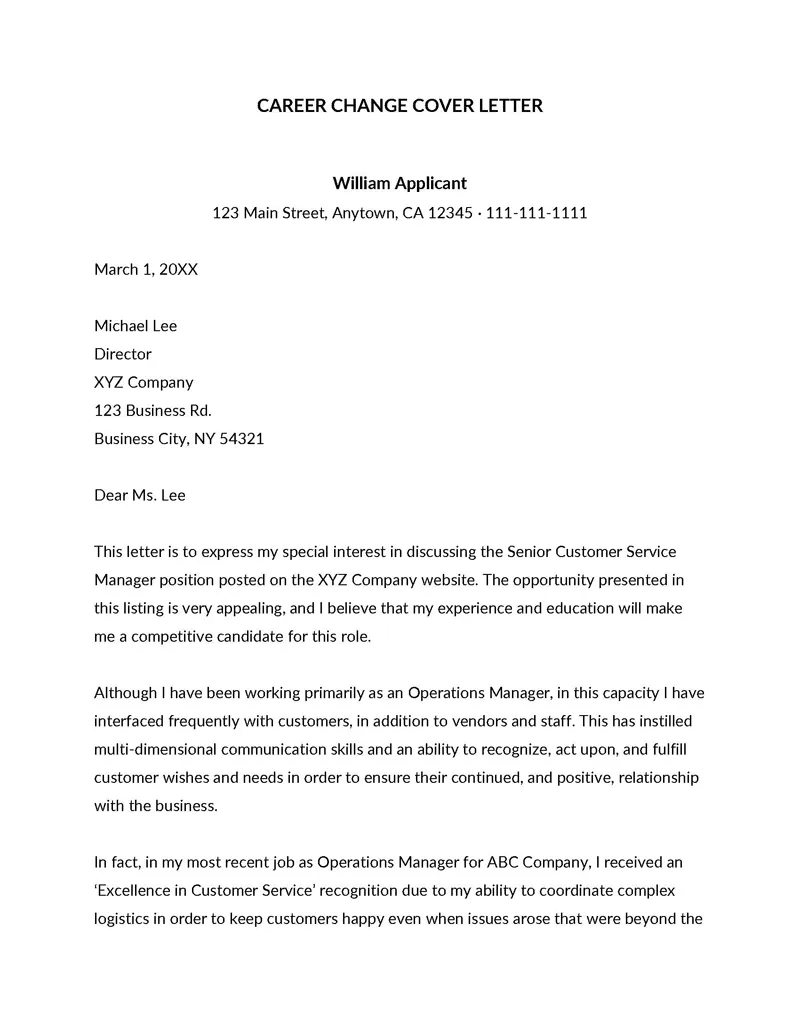
To grab the reader’s attention, start with an interesting or compelling statement. You could begin with a brief anecdote that highlights a relevant skill, a quote from the company’s website that resonates with you, or a bold statement about your career change. Avoid clichés and generic phrases. Be specific and show the reader that you’ve put thought into your application. Focus on the unique value you bring to the table. Showcasing your personality will make your letter more memorable and engaging. Tailor your opening to the specific role and company to demonstrate your genuine interest and understanding of their needs. This personalization will make your cover letter stand out from the crowd.
Clearly Stating Your Intentions
Immediately after grabbing the reader’s attention, clearly state your purpose for writing. Mention the specific position you’re applying for and where you found the job posting. This ensures that the hiring manager immediately understands the context of your application. Briefly explain your interest in the role and the company. If you’re making a career change, be transparent about this and explain your motivation for the transition. Be direct and concise, providing a clear and concise overview of why you’re a good fit for the position. This straightforward approach shows that you value the reader’s time and helps them quickly understand your application.
Highlighting Your Achievements
In the body of your cover letter, highlight your key achievements and demonstrate how your skills and experience align with the job requirements. Use action verbs to describe your accomplishments and focus on results. Provide specific examples of how you’ve made a positive impact in previous roles. Instead of simply listing your responsibilities, quantify your achievements whenever possible. For example, state that you increased sales by a specific percentage or streamlined a process to save the company time and money. Highlighting achievements demonstrates your value and showcases your ability to perform well in the new role.
Quantifying Your Accomplishments
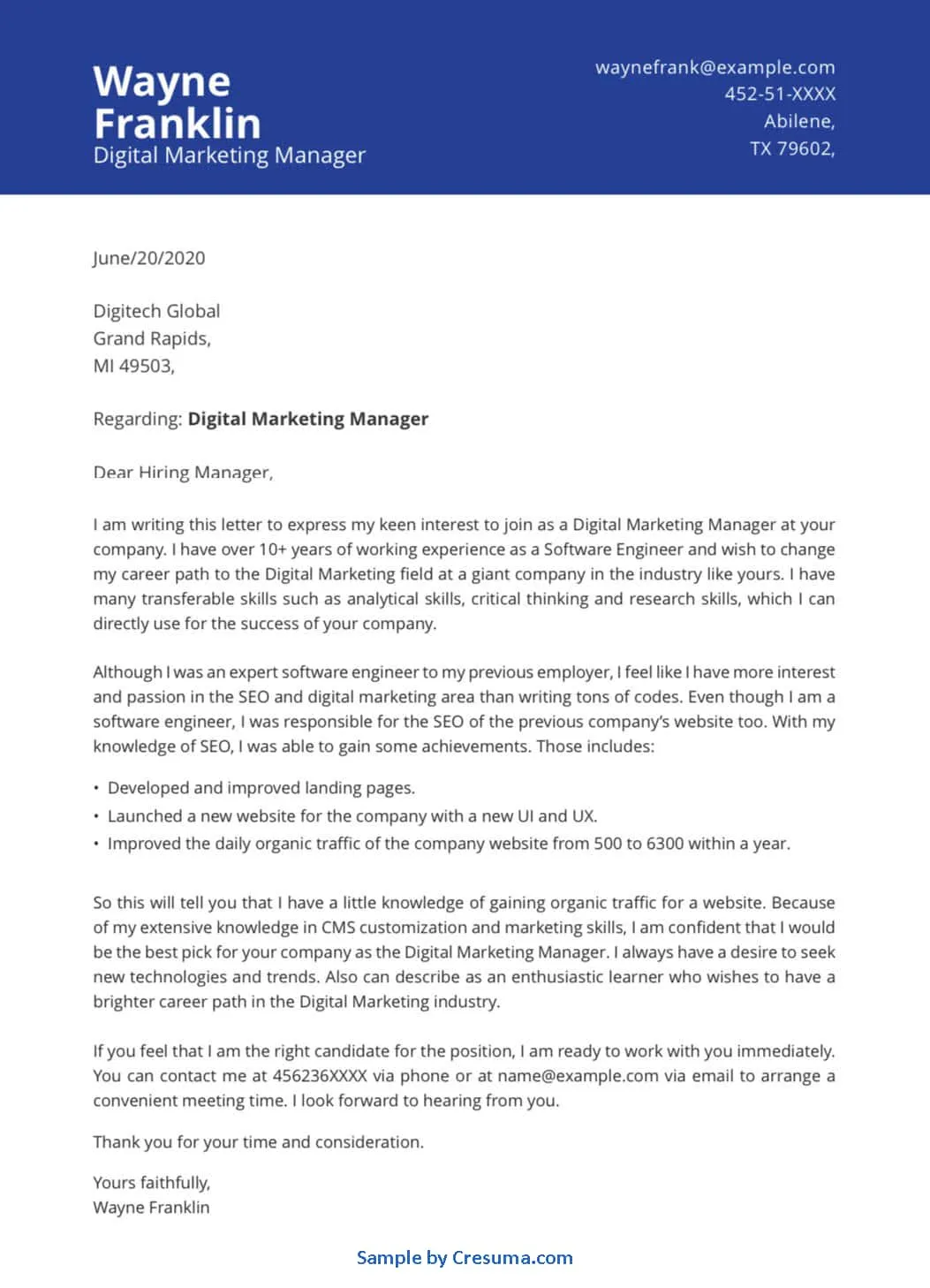
Whenever possible, quantify your achievements to demonstrate your impact and provide concrete evidence of your skills. Use numbers and statistics to illustrate your accomplishments, such as the amount of revenue you generated, the percentage of cost savings you achieved, or the number of projects you successfully completed. For instance, if you improved customer satisfaction, mention the percentage increase. Quantifiable results make your achievements more compelling and help the hiring manager assess your potential value to their company. They also help distinguish you from other candidates who may be making similar claims. Remember to provide context for the numbers. Explain the situation and the actions you took to achieve the positive outcome.
Providing Specific Examples
Support your claims with specific examples. Instead of stating that you’re a good problem-solver, provide a brief description of a time you successfully resolved a complex issue. Explain the situation, the actions you took, and the outcome. The STAR method (Situation, Task, Action, Result) is a helpful framework for structuring your examples. Provide enough detail to show the hiring manager how you think and approach challenges, and to demonstrate your skills in action. Keep your examples concise and relevant to the job requirements. Tailor the examples to match the specific skills and experiences the employer is seeking.
Addressing the Skills Gap
When making a career change, it’s essential to address the skills gap. Acknowledge any areas where your experience might not directly align with the job requirements. Then, focus on how you plan to bridge that gap. This might include highlighting your transferable skills, mentioning any relevant training or certifications you’ve acquired, or expressing your willingness to learn and adapt. Explain how your previous experiences, even if in a different field, have prepared you for success in the new role. Being proactive in addressing the skills gap will show the hiring manager that you have carefully considered the transition and are committed to succeeding. This also demonstrates self-awareness and a proactive approach to learning.
Connecting Your Past Experience
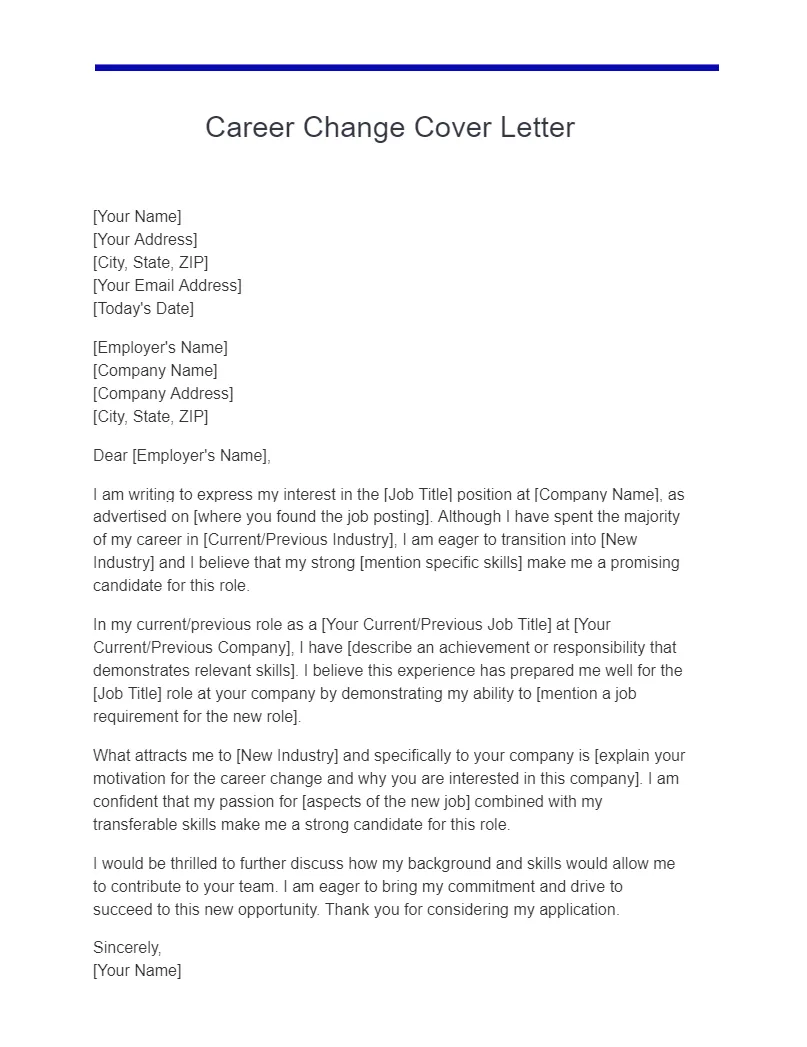
Even if your past experience seems unrelated, look for ways to connect it to the new role. Highlight the transferable skills you’ve developed, such as communication, leadership, problem-solving, and project management. Explain how these skills can be applied to the new position. Think about the underlying skills required and look for examples of how you’ve used them in previous roles. Focus on the aspects of your past work that are most relevant to the target job. By drawing clear connections between your past experience and the requirements of the new role, you can make a compelling case for your candidacy.
Focusing on Relevant Skills
Tailor your cover letter to the specific skills and requirements outlined in the job description. Carefully review the job posting and identify the key skills the employer is seeking. Then, focus on highlighting the relevant skills from your previous experience. Use the same keywords and phrases from the job description to demonstrate that you understand the role. Avoid mentioning irrelevant skills or experiences. Instead, emphasize what makes you a strong candidate for this particular position. This targeted approach shows that you have taken the time to understand the role and are a good fit.
Proofreading and Editing Your Cover Letter
Before submitting your cover letter, proofread it carefully. Check for any grammatical errors, spelling mistakes, and punctuation issues. A polished cover letter demonstrates your attention to detail and professionalism. Read your letter aloud to catch any awkward phrasing or unclear sentences. Ask a friend or family member to review your letter and provide feedback. Multiple sets of eyes can help identify any errors you might have missed. Take your time and make sure your cover letter is perfect before sending it. This step helps ensure the hiring manager perceives you as detail-oriented and professional.
Checking for Grammatical Errors
Carefully check your cover letter for any grammatical errors. These can include incorrect verb tenses, subject-verb disagreements, and incorrect word usage. Use a grammar checker and spell-check tool to identify potential mistakes. But don’t rely solely on these tools; always review the letter yourself. Misspellings and grammatical errors can distract the reader and damage your credibility. Ensure that your sentences are well-structured and that your writing flows smoothly. Taking the time to proofread for grammatical errors demonstrates professionalism and a commitment to quality.
Ensuring Clarity and Conciseness
Ensure your cover letter is clear, concise, and easy to read. Use short, direct sentences and avoid jargon or overly complex language. Keep each paragraph focused on a single idea. Avoid repetition and unnecessary details. Make sure your letter is focused on the key qualifications that make you a good fit for the role. Use clear and professional language throughout. Proofread your letter to remove any redundancies or wordiness. A concise and well-written letter shows respect for the hiring manager’s time and increases the chances of your message being understood.
Finalizing Your Career Change Cover Letter
After writing, editing, and proofreading your cover letter, finalize it by saving it in a professional format, such as PDF. This ensures that your formatting is preserved and that the hiring manager can easily open the file. Customize your letter for each job you apply for, tailoring it to the specific requirements of the position. Update your contact information and ensure that the date is correct. Review the letter one last time to confirm that you are happy with the final result. By following these steps, you will create a compelling cover letter that showcases your skills and grabs the attention of the hiring manager.
